#pacific conservation biology
Text
[Warning: Graphic (some very graphic) shark-fishing pictures at the link.]
"Suhardi isn’t your average snorkeling guide. Born on the Indonesian island of Lombok, he’s spent his life on water. While he now seeks out sharks for the enjoyment of tourists, he once hunted sharks to help earn money to feed his family and educate his two children.
Suhardi was a fisherman for more than 20 years. He first started fishing working on his parents’ boat, but was then asked to join the crew of a shark boat where he was told he could earn a lot of money. Back on deck, he looks embarrassed to divulge what a meager wage it was, but finally confesses he earned around $50 for up to a month at sea.
Now he and 12 other former shark fishermen are part of The Dorsal Effect, an ecotourism company that helps ex-shark hunters find a new vocation. Each week, the team takes groups of tourists, schoolchildren and university students to off-the-grid locations and guides them around pristine reefs. Each trip is designed to take guests on an exploratory journey of both the shark trade and marine conservation through the eyes of the Sasak people of Lombok.
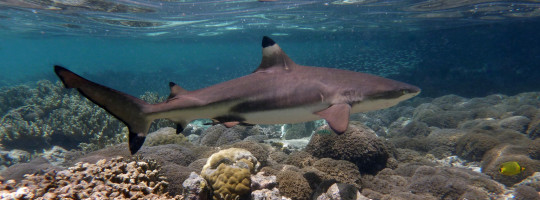
Lombok is a hotspot for marine diversity, sitting just east of the Wallace Line, a biogeographical boundary separating Asia and Australia and their respective fauna. Pristine coral gardens and around 80 species of sharks can be found in its waters. The island is also part of the world’s largest shark-fishing nation. Only the whale shark (Rhincondon typus) is protected in Indonesia; all other sharks can be legally caught.
The Dorsal Effect first launched in 2013, a year after Suhardi met Singaporean ecologist Kathy Xu, who had traveled to Lombok to find out more about the shark trade. The diminutive but quietly determined Xu wanted to protect sharks, but because she knew shark fishing was poorly paid and dangerous, she wanted to hear the fishermen’s stories too. They told her how once they could fish for sharks close to shore, but now with the shark population dropping, the fishermen said they needed to travel farther out to sea, only to come home with a relatively poor catch. The reduced catch also meant reduced pay, so they often couldn’t cover their costs...
Yet, when Xu asked why fishers didn’t seek out another trade, she learned they didn’t want to be separated from the sea. They saw it as part of their heritage.
But as they spoke longer, the shark fishermen talked about the coral gardens that could be found under the waves, ones that only they knew about. Inspired by a whale shark diving trip she’d taken with scientists on the Great Barrier Reef, Xu had an idea. “If such spots exist,” she recalls telling the fishers, “I could take tourists out with you and pay you more than you earned shark fishing”.
At first, Xu guided the former shark fishermen on how to become eco-friendly tour operators. They dropped anchor away from the reef, served guests plant-based dishes, and made sure all trash was taken back to shore. But then Xu saw that something special was happening: The former fishermen had started to take the guest experience into their own hands, making sure tourists felt at home. Suhardi painted “Welcome” in large letters over the front of his boat, fitted green baize to the top deck for outdoor seating, and hung curtains in the cabin so his guests could enjoy some shade.
Suhardi has already bought a new boat with his earnings from snorkeling trips. “Every day is my best day,” laughs Suhardi, whose smile always travels from his mouth to his eyes.
While they were receiving tourists from across the globe, there was another group that Xu wanted to reach out to. “I think it was the teacher in me who felt impassioned about influencing the young,” she says. She reached out to schools and created a five-day program that would help students understand the shark trade and local conservation efforts. During the program, paid for by the school and students, participants would not only meet the ex-shark fishermen so they could ask them about their lives, but also hear from NGOs such as the Wildlife Conservation Society about their efforts to slow the trade. The Dorsal Effect also hired marine biologists to host nightly lectures and help the students with their field surveys...
The students were faced with the realities of the fishing trade, but they were also encouraged to take a balanced view by The Dorsal Effect team. The villagers weren’t just taking the fins, and throwing away the rest of the shark; they processed every piece of the animal. While they did sell the meat and fins to buyers at the market, they also sold the teeth to jewelers, and the remains for pet food.
The Dorsal Effect also takes students on an excursion to the fishermen’s village, a small island that lies off the coast of Lombok. Marine biologist Bryan Ng Sai Lin, who was hired by The Dorsal Effect team, says that on one trip with students he was surprised by how quickly the young people understood the situation. “One of them said it’s good to think about conservation, but at the same time these people don’t really have any other choice,” Lin says....
Conservation scientist Hollie Booth of Save Our Seas, which does not work directly with The Dorsal Effect, says the need to provide legal profitable alternatives to shark fishing is critical: “We are never going to solve biodiversity and environment issues unless we think about incentives and take local people’s needs into account. These kinds of programs are really important.”"
-via Mongabay, December 15, 2023
#shark#sharks#fish#marine biology#marine animals#sea creatures#fishing#marine life#marine conservation#endangered species#overfishing#indonesia#lombok#school#field trip#ocean#pacific ocean#biodiversity#conservation#environmentalism#fishermen#scuba#scubadiving#underwater#diving#coral reef#ocean life#good news#hope
695 notes
·
View notes
Text
Animal of the Day!
Pacific Blackdragon (Idiacanthus antrostomus)
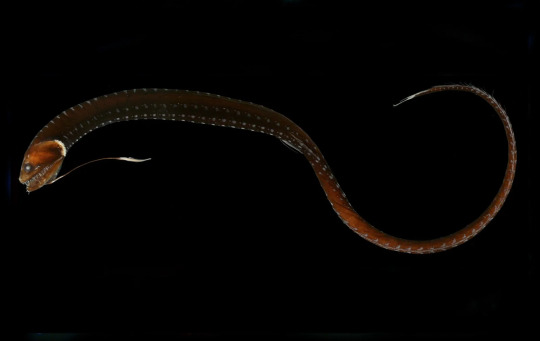
(Photo from Oceana)
Conservation Status- Least Concern
Habitat- Eastern Pacific Ocean
Size (Weight/Length)- 60 cm
Diet- Small fish; Crustaceans
Cool Facts- Just when you thought the ocean couldn’t get any weirder, or worse depending on who you ask, the Pacific blackdragon is out there. Despite being less than a meter long, these fish are masters of their deep sea home. Found up to 2,000 meters below sea level, where no light permeates, the Pacific blackdragon can absorb up to 99.95% of light so that it practically appears invisible. Even their stomachs and throats are black to eliminate light produced from the bioluminescent fish they eat. Females have a long chin whisker that they flick to lure in prey. Males are tiny, lack a digestive system, and only live long enough to mate with a female.
Rating- 12/10 (Still have well-developed eyes despite living in the deep.)
#animal of the day#animals#fish#deep sea#marine life#monday#november 13#pacific blackdragon#biology#science#conservation#the more you know#there are many benefits to being a marine biologist
387 notes
·
View notes
Text


Hippocampus ingens or Pacific Seahorses
These are the largest known species of Seahorse, and because of that, they're also known as the Giant Seahorse. They grow to be 36 cm long (14 in). Like most seahorses, this species has a prehensile tail, allowing them to anchor onto structures like plants.
#seahorse#sea horse#pacific seahorse#sea horses#seahorses#animals#cute animals#animal gifs#icthyology#science#biology#ecology#zoology#nature#wildlife#earth#conservation#ocean#oceans#sea#sea life#sea animals#sea creatures#animal facts#fun facts#giant seahorse#marine biology#marine bio#hippocampus ingens#marine life
447 notes
·
View notes
Text
Why Forests Need Salmon
(Originally posted at my blog at https://rebeccalexa.com/why-forests-need-salmon/)
One of my favorite fall activities is to check local streams for salmon runs. Here in the Pacific Northwest, and extending north into Alaska, we have seven species of anadromous Salmonidae: chinook salmon (Oncorhynchus tshawytscha), chum salmon (Oncorhynchus keta), coho salmon (Oncorhynchus kisutch), sockeye salmon (Oncorhynchus nerka), pink salmon (Oncorhynchus gorbuscha), coastal cutthroat trout (Oncorhynchus clarkii clarkii), and steelhead (Oncorhynchus mykiss). My favorite run is the chum salmon that run up Ellsworth Creek in southwest Washington each fall, but I’m honestly just happy to see any migrating salmon. And as I hike through stands of ancient western red cedar (Thuja plicata), I like to think about the many ways in which these and other forests need salmon for their ongoing health.
Anadromous fish are those that are born in fresh water, spend much of their adult lives in salt water, and then return to fresh water to spawn. Some, like Atlantic salmon (Salmo salar) and some populations of American shad (Alosa sapidissima) are iteroparous, meaning they can make this journey multiple times in a lifetime. Pacific salmonids, on the other hand, are semelparous, meaning that they spawn once and then die shortly thereafter. (From here on out I am going to use “salmon” as a general, casual term referring to both the Oncorhynchus species, and the steelhead and cutthroat trout.)
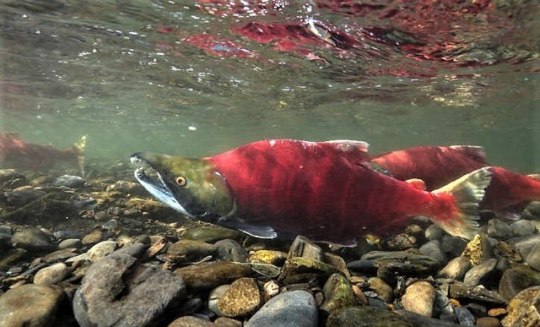
Pacific salmon were originally freshwater fish that inhabited lakes and slow-moving rivers. Somewhere around 25 million years ago, the climate cooled significantly, with average temperatures dropping almost twenty degrees F. We’re not sure at what point after this the salmon began expanding into brackish estuaries and then the Pacific Ocean itself, but when they did they found rich sources of food unlike what they had access to in fresh water. Over time, they evolved a life cycle that let them be born in the relatively safe shelter of freshwater streams, and then go out to the ocean to feast on the banquet found there when they were large enough to have a better chance of survival.
Eventually salmon runs could be found in streams as far inland as eastern Idaho, eastern British Columbia, and the southern two-thirds of Alaska (with some Alaskan runs even crossing over into Canada!) And until the arrival of European colonizers, these streams consistently provided indigenous people all along the Pacific coastline an incredibly important source of food, cultural and economic trade, mythos, and more. Unfortunately, the newcomers overharvested the salmon, dammed and destroyed streams and other habitat, and of course spearheaded the causes of anthropogenic climate change.

Indigenous people fish for salmon at Celilo Falls on the Columbia River. As the single longest continuously inhabited community in North America (over 15,000 years!), this location was a home and hub of cultural activity for many indigenous tribes and communities across the region before it was flooded by the completion of the Dalles Dam in 1957.
All these factors have led to a precipitous decline in the size of both salmon runs, and the salmon themselves. This isn’t just detrimental to indigenous communities, though. It also threatens the health of forests all throughout the salmons’ range.
A forest isn’t just made of trees. It’s composed of entire plant communities, fungi (including mycorrhizal species), and the animals, bacteria, and other living beings that share space with them. When salmon travel up and down the waterways as fry, and then later to spawn as adults, they have a direct impact on that ecosystem.
Salmon fry are an important source of food for larger fish, amphibians, birds, and other beings that seek food in the water. In fact, part of why salmon lay so many eggs (over 5,000 in the case of chinook!) is because most of the fry that hatch will never make it to adulthood. But adult salmon aren’t safe from predation on their return trip to their birthplaces. In fact, they are caught and eaten by a wide variety of animals from bears to eagles, wolves to osprey, sea lions to bobcats.
Bears are of particular interest here. Brown bears (Ursus arctos) are well-known for gorging on summer and fall salmon runs to build up massive amounts of fat in preparation for winter hibernation. (Katmai National Park even celebrates their bears during Fat Bear Week every October!) You can watch video feeds of several bears hanging out in their favorite fishing spots by waterfalls and in the flow of the river.
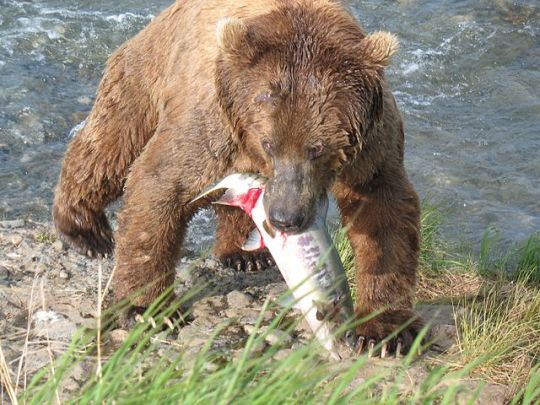
Imagine that you are a young bear, perhaps recently forced to independence by your mother who is now focused on your younger siblings. You have to not only start catching fish without her protection from bigger bears, but you also need to make sure those stronger bears don’t steal your catch. What’s the best thing to do? Run far away into the woods to eat your salmon in peace, then leave the remains among the trees and head back for more.
If the fishing is good, bears will often eat only the fattiest parts of the salmon like the brains and skin, and then leave the rest behind for scavengers. The nutrients in the salmon then disseminate throughout the forest, whether carried in the digestive systems of animals, or broken down in place by decomposers. This helps make the nutrients available to the plants, particularly trees which may store massive amounts of nutrients in their trunks; when the trees die, they essentially become a food pantry for younger beings like new seedlings, fungi, and so forth.
Now–what’s so special about the nutrients in salmon? Well, remember that these fish spend years out in the ocean. And the ocean has an entirely different balance of nutrients floating around in it compared to what’s found in fresh water or on land. The salmon are essentially the only way these ocean-borne nutrients can make their way into the forest in any meaningful amount, and they do so on a regular basis each year. The trees near salmon runs fished by bears may be 300% larger than usual, and salmon also provide nearly three quarters of the nitrogen in the forest. That’s a pretty impressive contribution!

This isn’t just about how forests need salmon; it’s a reciprocal relationship. While the salmon’s immediate habitats are aquatic, these streams, rivers, and other waterways are directly affected by what happens on the land around them.
Every waterway has a watershed–an area of land from which precipitation drains into that waterway. These watersheds nest within each other; the watersheds of small streams are nested within the watersheds of the rivers the streams feed into. That water carries things with it, from soil to pollutants. So the health of the land has a direct impact on what is found in the water.
But it goes beyond what’s washed downstream, and into how it’s washed down. In a healthy forest, for example, the soil is able to absorb a significant amount of precipitation that falls throughout the year, keeping it from simply cascading down hillsides to create flooding and landslides. Water is also stored in the various living beings in the forest; again trees are often the champions with their great size, but smaller plants help with water retention quite a bit as well, both through internal storage and preventing evaporation from soil. A forest that is badly damaged, such as through a clearcut or wildfire, won’t hold water as well. This can lead to floods, landslides and other erosion, and increase the impact of summer droughts as the land simply can’t store as much water, or for as long.
All of this affects the salmon directly. If the watershed is no longer holding and releasing snowmelt, rain, and other water in a controlled manner, this can lead to flooding in waterways which can wash away salmon eggs and fry. Increased erosion buries the gravel that salmon lay eggs in with silt, smothering the eggs so they never hatch. When a riparian zone–the land along a waterway–is stripped of vegetation, the water loses crucial shaded areas that keep temperatures cool. Salmon easily overheat when temperatures rise even a few degrees. And drought can dry up smaller streams, stranding and even killing young salmon while preventing adults from reaching their spawning grounds.
While not every single salmon run exclusively travels through forests, many of them do. And many spawning grounds are found in forests, or at least areas with significant tree cover in riparian zones. Salmon must have healthy forests in order to continue to survive, and the loss of these forests is just one of many factors contributing to their severe decline.
Thankfully, I am far from the only person concerned about the safety of our wild Pacific salmon. There are numerous organizations working to protect and restore salmon habitat through dam removal, preservation and restoration of aquatic habitat and surrounding land, regulations on salmon fishing, and educating people about sustainable seafood options (or just not eating seafood at all.) And even habitat restoration efforts that aren’t directly in salmon-inhabited waterways still have a positive impact on the forest ecosystem as a whole.
We know that forests need salmon, and salmon need forests. To protect one is to protect the other, and long may they both thrive.
Did you enjoy this post? Consider taking one of my online foraging and natural history classes, checking out my other articles, or picking up a paperback or ebook I’ve written! You can even buy me a coffee here!
#long post#salmon#fish#forests#nature#ecology#science#science communication#scicomm#wildlife#bears#Pacific Northwest#PNW#ecosystems#biology#extinction#endangered species#conservation#environment#environmentalism
608 notes
·
View notes
Text

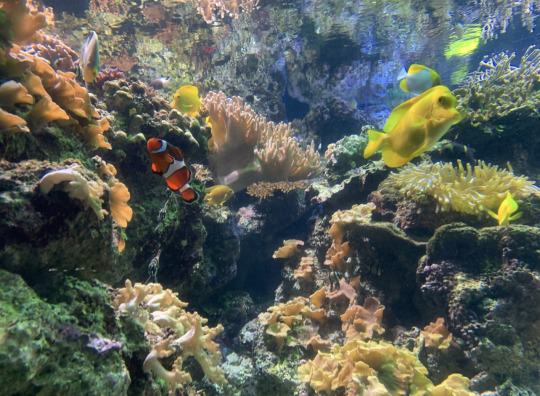








Pacific coral reef!
Corals are not only beautiful, they’re so important! They’re homes for dozens of different kinds of fish; notably the many yellow tangs in these pictures (:
#marine life#marine biology#marine biodiversity#conservation#coral reef#pacific ocean#pacific coral reef#fish#yellow tang#aquarium#national aquarium#chesapeake bay
5 notes
·
View notes
Text
Today I want to talk about the Pacific Northwest Tree Octopus (Octopus paxarbolis).
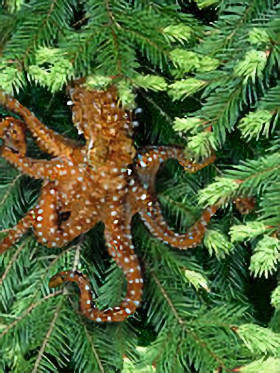
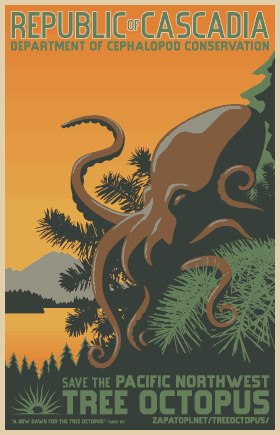
OK, so for those who don't know, the PNW Tree Octopus was an internet hoax created in 1998 consisting of a website detailing the animal's life history and conservation efforts. It's completely fake - saying that up front. This animal never existed.
But if you look at this from a speculative biology standpoint? It's genius.
There is one, and only one, thing preventing Octopus from colonizing and being hugely successful in terrestrial environments in the PNW, and that's the fact that no cephalopod has ever been able to overcome the osmotic stress of inhabiting freshwater. We don't know why this is; other mollusks evolved freshwater forms just fine. But if you hand-wave away that one, single limiting factor, the PNW is just primed for a terrestrial octopus invasion.
The Pacific coast of North America is an active tectonic boundary, meaning the coast transitions pretty much immediately into the Cascade and Coastal mountain ranges (contrast with the east coast and its broad Atlantic plain). It's also a lush temperate rainforest, with very high precipitation. This means lots and lots of high-gradient mountain streams with lots of waterfalls and rapids and cold, highly oxygenated water, and not as many large, meandering rivers.
This has important consequences on the freshwater fauna. For one, there are not many freshwater fish in the Pacific Northwest - the rapids and waterfalls are extremely hard to traverse, so many mountain streams are fish-free. There also just isn't much fish diversity in the first place - there's sturgeon in the big rivers, salmonids, a few sculpin and cyprinids and... that's pretty much it. These cold northern rivers are positively impoverished compared to the thriving fish communities of the Mississippi or Rio Grande.
Few fish means few predators, and depending on the size of the first freshwater octopus, salmon and trout just wouldn't be much of a threat. And while these rivers don't have much in the way of fish diversity, there's lots of prey available - crayfish, leeches, mosquito larvae, frogs and tadpoles, water striders, and other aquatic insects, just to name a few. So the first Octopus pioneers to invade the rivers would be entering what essentially amounts to a predator-free environment with lots and lots of food and no competition. Great for colonization.
These ideal conditions get even better once you get up past the rapids and waterfalls, since there's no fish whatsoever in those streams. Octopus, with their sucker-lined arms, are perfectly equipped to navigate fast-moving, rocky-bedded streams and climb up cliffs. They'd also be well able to traverse short stretches of dry ground to access even more isolated pools and ponds. In fact, once Octopus overcome the osmoregulation problem there's nothing at all preventing them from colonizing land in earnest, since the PNW rainforests are so wet; there's no danger of drying out.
Finally there's the question of reproduction. Octopus are famously attentive mothers, because they need to keep the water around their eggs moving and well-oxygenated. In a mountain stream, this wouldn't be an issue, because the cold, turbulent water holds lots and lots of oxygen. Breeding in high mountain streams would be ideal, and the mothers might not even need to attend to their eggs, freeing them up to evolve away from semelparity and allowing them to reproduce more than once in their lives; their populations would thus increase rapidly and dramatically.
I think, if octopus managed to invade freshwater ecosystems in the PNW, it would dramatically change the ecology much like an invasive species. They'd be unstoppable predators of frogs, bugs, slugs, maybe even larger animals like snakes, birds, and small mammals. Nothing would eat them except maybe herons, and things like bears and raccoons would give them a wide berth due to their venom. They would rule that landscape.
The tl;dr is that the PNW is primed for invasion by cephalopods, if only they could manage to overcome the osmoregulation problem and live in freshwater. If the Pacific Northwest Tree Octopus really did exist, it wouldn't be a shy and reclusive species on the brink of extinction; it would be a pest, an invasive, overpopulated menace you couldn't get rid of if you wanted to. I can just imagine them crawling up onto people's bird feeders and either stealing the nuts or luring in unsuspecting sparrows and starlings. They would sit in the trees and throw pinecones at hikers for fun. They would be some unholy mixture of snake and slug with the personality of a magpie and I am incensed that they only exist in fiction.
#long post#octopus#speculative biology#speculative evolution#spec bio#spec evo#pacific northwest#pacific northwest tree octopus#truly a shame that there are no freshwater or terrestrial cephalopods
294 notes
·
View notes
Text


Mexican biologist Yuliana Bedolla
Off Mexico's west coast, the Baja California Pacific Islands are key global nesting sites for 23 seabird species and Natividad Island shelters 90 percent of the breeding population of the Black-vented Shearwater (Puffinus opisthomelas).
Mexican conservation biologist Yuliana Rocío Bedolla Guzmán, Director of the Marine Birds Project at Grupo de Ecología y Conservación de Islas (GECI) says that invasive mammals like cats and rats wiped out at least 27 seabird colonies in the past.
The researchers have been working with fishing cooperatives to decrease the likelihood of reintroductions that would lead to expensive eradication efforts.
"In 2021, we created the local community group “Líderes Comunitarios'' formed by enthusiastic and committed women who have received formal training on island biosecurity and bird identification, and are becoming agents of change in their communities," Bedolla says.
Recently, Bedolla won a 2023 Whitley Award from UK charity Whitley Fund for Nature (WFN) and will use the funding to boost the role of local women and fishing cooperative.
"The goal is to continue preventing the accidental introduction of invasive mammals on Natividad and San Benito Oeste islands by actively involving local leaders and fishing cooperatives in biosecurity protocols," she says.
"My Grain of Sand"
Bedolla grew up far from the sea in Moroleón, a small town in central Mexico, where she enjoyed being out in nature.
"But I had my Eureka moment when I learned to snorkel when I was 12 years old at a beach in Zihuatanejo, Guerrero, in the Mexican Pacific," she says adding that she remembered a feeling of amazement, wonder and a new sense of connection to nature.
"That experience was life-changing for me and marked the beginning of my journey as a conservationist," Bedolla says, "From that moment on, I knew I wanted to become a marine biologist and contribute with my grain of sand."
She would go on to study Marine Biology at the Universidad Autónoma de Baja California Sur in La Paz, Baja California Sur, Mexico, learning to dive and study coral reefs and associated invertebrates on several islands in the Gulf of California.
Bedolla would contact GECI in the course of her masters degree and years later, after a Phd in Germany, GECI offered her the directorship of the Marine Birds Project.
Bedolla says that being from the Global South helps her to bring diverse perspectives and approaches to scientific research, which can lead to more innovative and creative solutions.
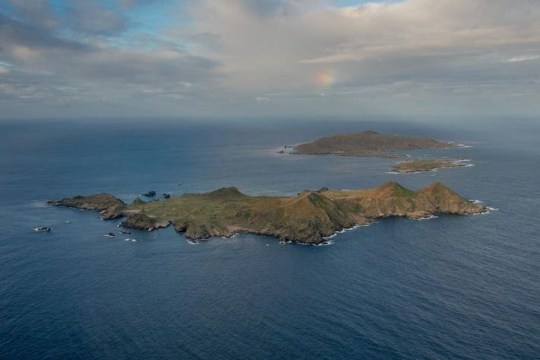
The San Benito Islands, which is among the islands Yuliana Bedolla is trying to protect from invasive species
Yuliana is a marine biologist, graduated with honors from the Autonomous University of Baja California Sur (UABCS).
She is a Master in Coastal Oceanography from the Autonomous University of Baja California (UABC) and a PhD candidate from the Justus Liebig University of Giessen in Germany. For her doctorate, she obtained a scholarship in Germany. Yuliana speaks Spanish and English and has basic knowledge of the German language. Her doctoral research focuses on the foraging ecology of three petrel species that nest in the San Benito Archipelago, in the Pacific of Baja California.
She began collaborating with the Ecology and Conservation of Islands Group, A.C., (GECI), in 2009 as a field biologist, and is currently the director of the Seabird Project, which aims to restore and conserve seabirds through the use of social attraction systems in conjunction with systematic monitoring, research and environmental education. She has carried out numerous research studies with national and international institutions. Her scientific publications in international journals focus on the response of seabirds to environmental conditions, the parasites that infect seabirds and the response of native fauna to the eradication of invasive mammals.
She has collaborated with several national seabird conservation programs and has been directly involved in environmental restoration projects in Isla Isabel, San Benito Archipelago, Banco Chinchorro and Arrecife Alacranes, related to the eradication of invasive rodents for the benefit of seabird colonies, among other island species. Her activities at GECI include project planning, staff coordination and supervision, applied research and monitoring, environmental education with local communities and dissemination of information in conferences and scientific reports and publications.
Source
#🇲🇽#Yuliana Rocío Bedolla Guzmán#STEM#mexico#baja california#pacific islands#animal#bird#rat#cat#GECI#2023 Whitley Award#Universidad Autónoma de Baja California Sur#Marine Birds Project#san benito islands#ecuador#banco chinchorro#scorpion reef#gulf of mexico#mexican#latina#hispanic#natividad island#Grupo de Ecología y Conservación de Islas
33 notes
·
View notes
Text

Found some excellent horror-related and horror-adjacent books to read this month! Not a common genre for me, so this was fun. Really can't recommend Grady Hendrix as an author enough, Horrorstör was definitely my favourite novel from this month

Eric
I hate saying it because I love the Discworld and Terry Pratchett is easily my favourite author, but man Eric did not do it for me. You could see some good bones in it, but as far as I’m concerned all the interesting bits that appeared were done significantly better in later books. It had some humour moments, but the only bits that I really enjoyed were when the Luggage was around.
This story followed a young, teenaged, would-be demon summoner who, instead of summoning a demon, accidentally winds up with the incompetent and fearful wizzard Rincewind. Obligated to answer this kid’s wishes, they end up bouncing through time and space while attempting to survive what each wish had to throw at them.
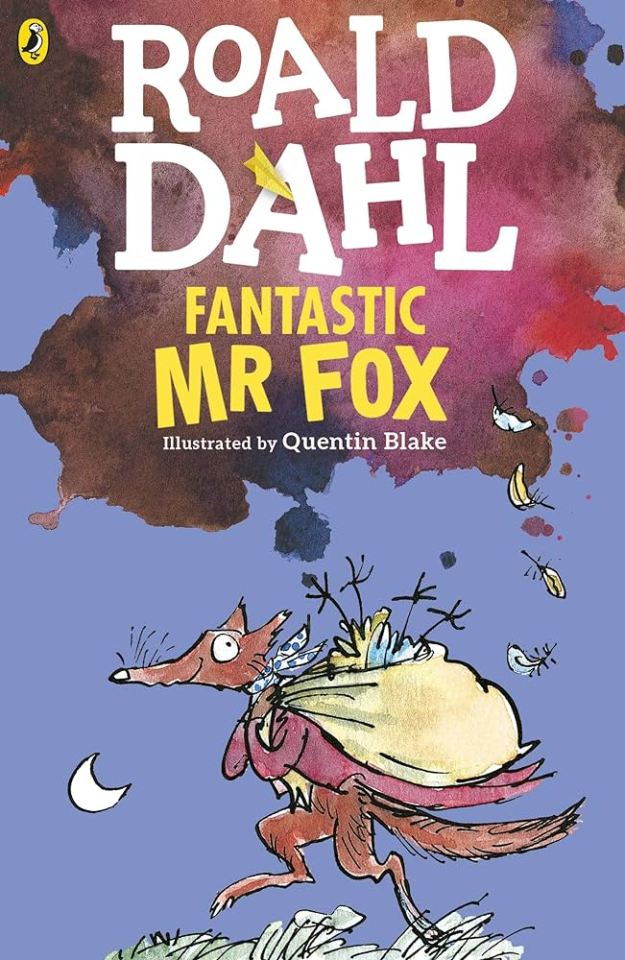
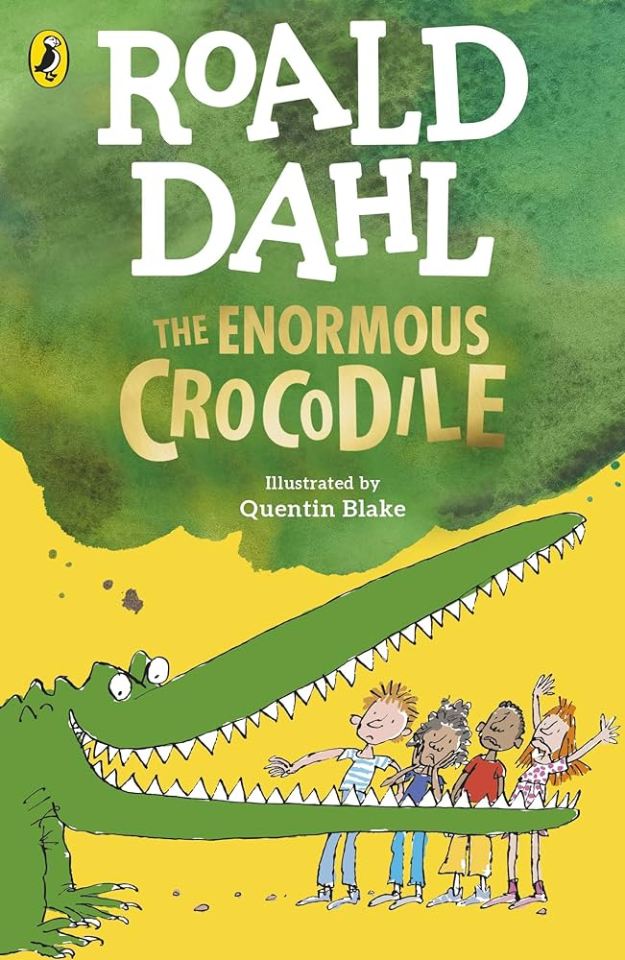

Fantastic Mr Fox / Esio Trot / George’s Marvellous Medicine / The Enormous Crocodile
I went on a Dahl kick this month, I wanted to work through some of his shorter works that I’ve never bothered to read before. All of them were honestly delightful, I had a blast. Esio Trot was probably the weakest of the lot, but the other three were so much fun. The Fantastic Mr Fox may be my favourite just by virtue of being the most fleshed out, but listening to The Enormous Crocodile be read by Stephen Fry is an unparalleled experience.

Hockey Girl Loves Drama Boy
A story I enjoyed more than I expected. I have a strange soft spot for hockey narratives, but that might just be the Canadian in me. Alix’s one true love is hockey, it’s the one place she feels competent and happy, but her team captain is making the space increasingly hostile until, unable to take the bullying, she strikes out and punches her captain. Shocked by her own violence and given an ultimatum by the coach to get her temper under control, she ends up going to popular and poised Ezra, hoping that he could show her how to deal with harassment without losing her cool in a way that scares her.

Horrorstör
Easily the best book I read this month, this book was amazing, I can’t recommend it enough. It’s a “haunted house but in a knock-off Ikea” and I mostly picked it up as a joke because the premise sounded hilarious. But I was familiar with the author (I’d read The Southern Book Club’s Guide To Slaying Vampires a couple years ago) and trusted him to do something interesting with the premise. And wow. Just wow. It is very much a classic, grisly, nauseating horror premise, but in a way that explores capitalism, exploitation, and treatment of prisoners and the mentally ill. It’s been a long time since I read a book that actually gave me chills, but I had to put this book down and walk away from it occasionally, it was intense enough.

The Kaiju Preservation Society
As a Pacific Rim lover, this book was everything I’d ever wish for it to be. It’s such a love letter to the kaiju genre as well as environmental conservation, and it’s speculative biology is fascinating!
After being fire from his job at the beginning of the Covid pandemic lockdown in New York City, Jamie Gray is barely making ends meet by acting as a delivery driver. He doesn’t know how he can possibly continue on like this, until he runs into an old friend who offers him a strange and intensely secretive job offer. With nothing to lose, Jamie agrees and finds himself on an alternate Earth, helping to study creatures that he only knows from campy monster movies, now very much real.
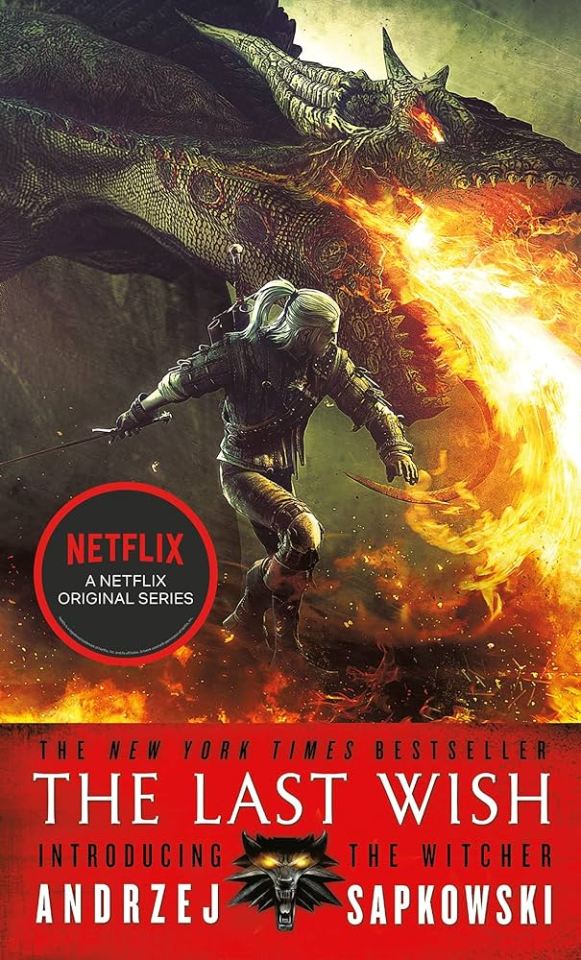
The Last Wish
Felt an urge to reread a Witcher book, so I’ve been picking my way through the short stories. They continue to be a lot of fun, and it felt good to reconnect with the original narrative voice again after reading a lot of fanfiction over the years. For anyone who has someone existed post-Netflix version without picking up the general premise: Geralt of Rivia is a "witcher", a person who was specifically trained to wield weapons and magics to hunt dangerous monsters that threaten humans. This is a collection of short stories that show Geralt on some of the various hunts he's had during the decades of his over-long life. (It's significantly better than the Netflix version, very much worth the read if you like classic high fantasy and/or fairy tale retellings.)
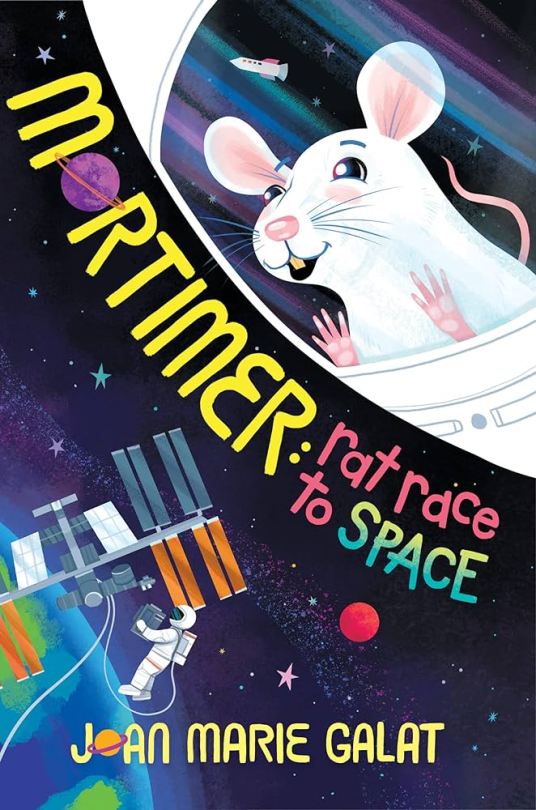
Mortimer: Rat Race to Space
A very dull youth novel. Mortimer is a lab rat at Houston who has aspirations to go on the space program and prove that rats are better suited for colonizing Mars than humans. If you’re a seven year old who wants to consume space facts, this is the book for you. For everyone else, it’s a bit of a slog.

My Best Friend’s Exorcism
Another Grady Hendrix book. This book was undeniably well-written, just as masterful as his others, but I didn’t enjoy it as much. A bit too much high school narrative and not enough all out horror. The conclusion was pretty decent, but the rest was… fine. A fun love letter to the 1980s though as you learn about two best friends and how they grow up together. ...A bit of a debate whether or not it warrants a queer marker or not, I'm not even going to make that attempt.
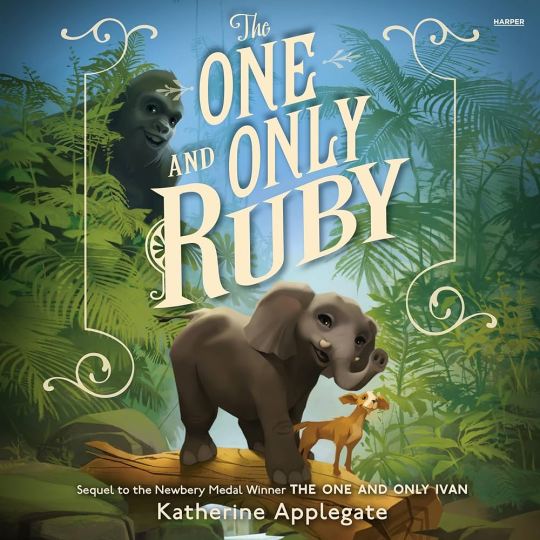
The One and Only Ruby
The newest book from the One and Only Ivan series. Much like The One and Only Bob this book was… fine. The original of the series was really wonderful and felt quite inspired, inspired by the real life story of a gorilla that’s kept in a small cage in a mall complex. The next two books take place after that one and each follows one of Ivan’s friends (Bob the dog and Ruby the baby elephant). A fun enough addition to the series, the art is still cute, and it has decent things to say about the hunting of endangered animals, but it was nothing amazing.

Paperbacks from Hell
Look, I really just felt the desperate need to read a bunch of Hendrix novels after being so violently consumed by Horrorstör. This is a nonfiction book in which Hendrix dives into the evolution and popular tropes of horror novels throughout the 1980s, with the cover art being the driving thesis throughout. You can tell how much he loves these weird, pulpy horrors and it makes you want to go and find a bunch of these and read them yourself. It really is an interesting book, even if you aren’t a great horror lover (which I wouldn’t consider myself).
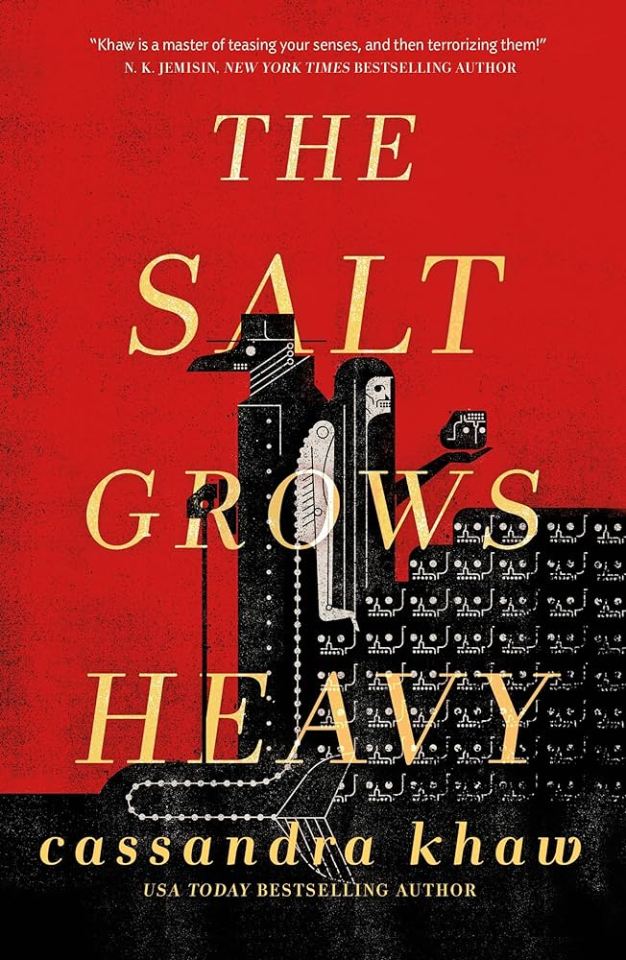
The Salt Grows Heavy
Now this is a fucking novella. An absolutely unhinged, body-horror rich retelling of both The Little Mermaid and Frankenstein. Yeah. After the complete destruction of her husband’s kingdom at the hands (and jaws) of her own children, the Mermaid finds herself travelling with a mysterious Plague Doctor. I won’t go further into this except to say that the way it portrays morality, life, death, and the mutability of flesh is just… something else. Would recommend. But not if you have a weak stomach.

Scott Pilgrim
A classic. I watched the new animated series with my brother and felt the need to go back and reread the entire original series. Absolutely perfect, no notes, continues to be one of my all time favourite graphic novel series. The magical realism is just *chef’s kiss*.
#book review#book reviews#queer lit#scott pilgrim#grady hendrix#horrorstor#my best friend's exorcism#the witcher#the last wish#kaiju preservation society#roald dahl#terry pratchett#discworld#the salt grows heavy#the one and only ivan#the one and only ruby#katherine applegate#mortimer rat race to space#hockey girl loves drama boy#canlit#canadian
14 notes
·
View notes
Text
A silent killer stalks sea turtles. A small town is trying to stop it. (Washington Post)
The turtles of La Sabana are vanishing. This small town on Venezuela’s Caribbean coast, known for producing such baseball stars as Alcides Escobar and Ronald Acuña Jr., is home to four of the seven sea turtle species on Earth.
Hawksbill sea turtles are classified by the International Union for Conservation of Nature as critically endangered: Facing an “extremely high risk”of extinction in the wild in the “immediate future.” Green and leatherback sea turtles are endangered: facing a “very high risk” of such extinction in the “near future.”
The loggerheads are designated as vulnerable: facing a “high risk” in the “near future.” Their global population, once in the millions, according to the Tucson-based Center for Biological Diversity, is down to an estimated 50,000. The greatest threats to the species include the loss of nesting grounds to coastal development and predators, entanglement in fishing equipment intended to catch other species, and pollution, according to the Gainesville, Fla.-based Sea Turtle Conservancy.
Adult sea turtles come to La Sabana each spring to lay eggs in the sand. The hatchlings emerge a few months later and head instinctively for the sea — a phenomenon that draws animal lovers and conservationists. Pérez and a team of local volunteers had spent years caring for and protecting these babies. But now a silent killer was spreading.
Pérez reviewed his handwritten notes for the day. He records the number of hatchlings born alive and the number of rotten eggs. Before this season, he said, he had never seen such low survival rates. A few weeks earlier, in a nest of 100 eggs, only two survived.
“We can’t figure out what is happening,” Pérez said.
In the weeks to come, he would learn that a similar crisis was emerging in a turtle population more than 300 miles away — a key to solving the mystery. But he and his team are still waiting for help saving the turtles.
Biologists studying turtles at Parguito Beach, a much-visited strand on Venezuela’s Isla Margarita, were also seeing plummeting survival rates. Biology student Angélica Burgos, a volunteer with the Nueva Esparta State Sea Turtle Conservation Group, identified a change in the local ecology as early as 2014, she told The Washington Post. “We realized that we were in the presence of an introduced plant,” she said.
Scaevola sericea, also known as beach cabbage or sea lettuce, thrives in the mangrove swamps of the South Pacific. On Margarita, biologists found its roots were crowding out the eggs before the turtles were even fully formed.
2 notes
·
View notes
Text
Shellos & Gastrodon
Shellos (#422)
Limarex cornusformosus pacifica (West Sea Shellos)
Limarex cornusformosus atlantica (East Sea Shellos)
General Information: Shellos the Sea Slug Pokémon. When under duress, Shellos emit a sticky purple fluid from themselves. While otherwise harmless, this fluid serves a vital defense mechanism against threats.
There are two main forms of Shellos: the West Sea and East Sea variants. There may be more unofficial variants.
Both forms of Shellos are 1 foot tall (0.3 M) and weigh about 13.9 pounds (6.3 kg).
Habitat: Shellos are found all around the world. They generally live in shallower waters near coral reefs and sponge reefs, able to crawl onto land for a few hours at a time before they risk drying out and have to return to the water.
The East Sea variant prefers the colder waters of the Atlantic, and have in recent centuries steadily decreased in numbers and even immigrated farther to the poles. In contrast, the West Sea variant prefers the warmer waters of the Pacific & Indian Oceans. They have proliferated under the rising ocean temperatures of climate change, and are steadily spreading to other parts of the global ocean, including the equatorial and Mediterranean regions of the Atlantic, as they make their way through the Suez Canal.
The West Sea and East Sea variants are named such because the scientist who realized that these two Pokémon were the same species, was from the Americas, so to him the Pacific Ocean was the West Sea and the Atlantic Ocean was the East Sea.
Life Cycles: Shellos are born from tiny eggs by the hundreds every winter, when oceanic oxygen saturation is at its peak. These eggs are not tended to by its parents, and many are eaten long before they’re ready to hatch. Upon hatching, the Shellos is fully independent and ready to start eating algae. Their natural defensive measure, the purple sticky ink stuff, is fully self-automated just like making mucus and breathing is for humans.
Every autumn, the Shellos begin the mating cycle, which is involves finding another Shellos (or other species, of course) that they fancy and a few weeks later laying a giant clutch of tiny Pokémon eggs. And I mean tiny, Shellos eggs are about the size of an adult human pinky-finger bone.
Behavior: Shellos are colonial animals that enjoy safety in numbers. They are amicable though scared easily by perceived threats.
Diet: They eat algae.
Conservation: Threatened (East Sea), Least Concern (West Sea)
Relationship with Humans: Shellos are neat little critters of the ocean. They have been food, companions, and just little guys you can keep in a saltwater aquarium. There is a misnomer that Shellos are “low-maintenance” pets, and this is far from the truth. They are saltwater organisms that require highly specific habitats just like other saltwater pets. While they have a tolerance for land, they need to be in saltwater for at least half of their day when outside their Pokéball. Of course, the specialty Pokéball, the Dive Ball, automatically provides a stable salt or fresh water environment depending on the species.
The spreading invasion of West Sea Shellos is a pressing point in marine conservation biology, and local Rangers and scientists are already trying to curb the spread and reintroduce East Sea Shellos in their old homes. Unfortunately, these efforts are limited in their success not because the East Sea Shellos can’t handle the warmer waters, but because the West Sea Shellos handles it better—they’re faster, quicker to react to predators, and have a greater tolerance for the lower oxygen levels. The two subspecies don’t even directly compete, in fact Shellos and Gastrodons alike are amicable with each other, it’s that they are evolutionary adapted for different ocean temperatures.
Shellos are capable of rapid regeneration and immense stretchiness of their limbs. Their regenerative capabilities are a source of scientific investigation.
Classification: Shellos are in the clade Anaspidea (Sea Hares). The species epithet “cornusformosus” roughly means “well-formed horns.”
Gastrodon (#423)
Limarex gigasformosus pacifica (West Sea Gastrodon)
Limarex gigasformosus atlantica (East Sea Gastrodon)
General Information: Gastrodon the Sea Slug Pokémon, and the evolved form of Shellos. Just like its pre-evolution, Gastrodon release the same sticky purple fluid when under pressure, which allows them to flee from threats. Their bodies are startling soft and squishy, and they leave behind a trail of sticky slime when they move around on land. Once upon a time, the ancestors of Gastrodons once had a shell that protected them.
They average at 2’11 ft (0.9 M) tall and weigh about 65.9 (29.9 kg).
Habitat: While Shellos live deeper in the water along reefs, Gastrodons prefer shallow tide pools, beaches, and rocky shorelines. They will move about on land as seen fit, especially during rainy weather, but have to be wary of their hydration levels for Gastrodons are susceptible to dehydration if they are out of water for too long.
Life Cycles: Gastrodon life cycles are identical to Shellos life cycles. The only difference is that Gastrodons are capable of laying more eggs than Shellos.
Behavior: Gastrodon are less friendly toward each other than Shellos are. While they are protective of their own, Gastrodons from other colonies/pods are seen as encroaching on their territory. Normally, pods are respectful of each other’s territory and there’s rarely conflict. In modern times, as West Sea Gastrodons steadily invade the Atlantic and Meditteranean Sea through the Suez Canal, this has led to a rapid uptick in violent conflicts between Gastrodons.
Diet: Gastrodon eat plankton, which is why they’re closer to the water’s surface than Shellos are.
Conservation: Threatened (East Sea), Least Concern (West Sea)
Relationship with Humans: The regenerative capabilities of Gastrodons are astounding, and are a growing area of research for organ replacement science.
Gastrodons are reasonably liked Pokémon. They’re not hugely popular like Eevees or Pikachus, but they’re well-established within the broader pop cultures of the world. There is an entire line of immensely soft and huggable plushies that are based on the squishy Gastrodon and Shellos. They are also popular in tournaments due to their reliability as a partner and surprising usefulness as battlers.
Classification: The genus name “Limarex” is based on “mare” (sea) and “limax” (snail) in Latin.
Evolution: Gastrodon evolves from Shellos at level 30.
~~~~~~~~
Hey guess what, if you like my stuff, this is my website where you can find other Pokémon I've written on and more information about the game that I’m slowly making! Check it out! I write books sometimes too.
#pokemon#Shellos#gastrodon#west sea gastrodon#east sea gastrodon#west sea shellos#east sea shellos#pokemon biology#homebrew#ttrpg#pokemon biology irl#pokemon tabletop#tabletop#tabletop homebrew#pokemon irl#pokemon biology irl tabletop#pokemon gen 4#gen 4 pokemon#pokemon dppt#pokemon diamond and pearl#pokemon platinum#sinnoh#pokemon pearl#pokemon diamond#pokemon bdsp#pokemon brilliant diamond and shining pearl
5 notes
·
View notes
Text
Article from 2020
The rapid decline of mountain caribou has alarmed both biologists and government officials and prompted an aggressive response. In 2015, British Columbia placed a bounty on wolves, which the province believed to be a key threat to the ailing herds. The sanctioned cull is estimated to have killed more than a thousand of the apex predators.
...
In 2019, an influential study suggested that culling wolves and creating fenced refuges for pregnant females could help stem the demise of mountain caribou. The government of British Columbia cited the paper’s findings to establish an expanded wolf cull, believed to have killed more than 460 wolves in the last year – part of the province’s multimillion-dollar caribou recovery plan.
But after running their own simulations, a team of researchers at the University of Alberta concluded that killing wolves wasn’t saving the caribou in areas where caribou were most vulnerable and at risk
In a new paper, published in the journal Biology and Conservation, the researchers used the same data results from the 2019 paper, but added a null model – a “self-check” meant to determine if a pattern is real, or just part of a random variation – to their statistical analysis of areas where caribou are declining.
The team could find no statistical support for claims that culling wolves and penning in pregnant caribou offset population decline – especially in the most vulnerable cases.
In the case of the endangered Wells Grey herd in central British Columbia, which has suffered one of the worst population declines, the researchers found that wolves weren’t even a major predator: bears, cougars and wolverines were far more deadly.
...
Environmental groups opposed to the cull have welcomed the findings. Wolves have been an easy villain, but a focus on predation ignores a more complex web of factors in the decline of the caribou, they argue.
“When you remove top level apex predators, like wolves, you see a collapse of ecosystems from insects to riparian areas, to the predator prey relationship to the forest cover itself,” said Ian McAllister, executive director at Pacific Wild, a conservation organisation. “Wolves in every meaning of the word are being used as a scapegoat for government negligence.”
Spribille and his colleagues believe habitat degradation, in the form of clear-cut logging practices, inflicts far greater harm on the caribou. By chopping down old trees, loggers remove critical food sources, as well as valuable shelter. It takes roughly 80 years for a forest to mature to the point that it produces a suitable amount of lichen, says Spribille, the main staple of the mountain caribou.
2 notes
·
View notes
Link
“As remote as they were beautiful, the coral reefs around the 5 volcano tips making up the Southern Line Islands dazzled National Geographic explorers in 2009 during a visit.
Remarking that they re-painted the image of what a pristine coral reef looks like—bursting with color and life—the team of the Pristine Seas Expedition had been crushed when a record-warming even in 2015 called El Niño caused mass coral die offs.
Then a return in 2021 revealed a remarkable scene—bright healthy corals teeming with life as far down as 100 feet off the island slopes. After record numbers of coral deaths, a team member estimated their populations averaged around 43 million to 53 million coral colonies per square mile.
The Southern Line Islands belong to the Pacific island nation of Kiribati, and Enric Sala, a marine biologist and member of Pristine Seas, detailed that it took longer to reach them by plane and boat than it took the astronauts of the Apollo missions to land on the Moon...
“The reef was covered by light-blue corals that looked like giant roses—a garden of Montipora aequituberculata stretching as far as I could see,” says Sala.
Since the Southern Line Islands are so remote, no one was keeping an eye on how the corals were able to regrow so significantly, but Sala has an idea. Since most of the montipora were the same size, it’s possible that one or two massive coral spawning events, where they reproduce and launch their eggs out into the sea before the larvae rain back down on the reef, are enough to repopulate large areas of dead corals.
Its resilience earned it the moniker of a “super reef” among the crew...
Kiribati’s government has ensured that these seas, which have never seen large-scale commercial fishing, will never see it, and now make up the Southern Line Islands Marine Protected Area (SLIMPA).” -Good News Network, 12/7/22
#kiribati#pacific ocean#coral#coral reefs#coral bleaching#marine biology#marine life#conservation#good news#hope#el nino
116 notes
·
View notes
Text
Animal of the Day!
Indo-Pacific Sailfish (Istiophorus platypterus)

(Photo in public domain)
Conservation Status- Least Concern
Habitat- Indo-Pacific Ocean; Atlantic Ocean
Size (Weight/Length)- 100 kg; 3 m
Diet- Fish; Squid; Crustaceans
Cool Facts- The Indo-Pacific sailfish is the fastest fish in the world, clocking in at a maximum speed of 110 kilometers per hour in short bursts. Living in small schools, these sailfish are constantly on the move and in the search for schooling fish. Pushing the school of prey fish into a ball allows the Indo-Pacific sailfish to dart in, one at a time, with amazing speed. Contrary to popular belief, sailfish do not spear fish using their bills. Instead, they rapidly move their head back and forth as they swim through the school, injuring prey with the side of their bill. When the next sailfish dives into the school, the injured fish are snapped up.
Rating- 13/10 (Supreme swordfighter.)
#animal of the day#animals#sailfish#fish#marine creature#thursday#august 17#indo-pacific sailfish#biology#science#conservation#the more you know
199 notes
·
View notes
Text
It’s a crisp fall evening in Grand Teton National Park. A mournful, groaning call cuts through the dusky-blue light: a male elk, bugling. The sound ricochets across the grassy meadow. A minute later, another bull answers from somewhere in the shadows.
Bugles are the telltale sound of elk during mating season. Now new research has found that male elks’ bugles sound slightly different depending on where they live. Other studies have shown that whale, bat, and bird calls have dialects of sorts too, and a team led by Jennifer Clarke, a behavioral ecologist at the Center for Wildlife Studies and a professor at the University of La Verne, in California, is the first to identify such differences in any species of ungulate.
Hearing elk bugle in Rocky Mountain National Park decades ago inspired Clarke to investigate the sound. “My graduate students and I started delving into the library and could find nothing on elk communication, period,” she says. That surprised her: “Thousands of people go to national parks to hear them bugle, and we don’t know what we’re listening to.”
Her research, published earlier this year in the Journal of Mammalogy, dug into the unique symphony created by different elk herds. Although most people can detect human dialects and accents—a honey-thick southern drawl versus nasal New England speech—differences in regional elk bugles are almost imperceptible to human ears. But by using spectrograms to visually represent sound frequencies, researchers can see the details of each region’s signature bugles. “It’s like handwriting,” Clarke says. “You can recognize Bill’s handwriting from George’s handwriting.”
Pennsylvania’s elk herds were translocated from the West in the early 1900s, and today, they have longer tonal whistles and quieter bugles than elk in Colorado. Meanwhile, bugles change frequency from low to high tones more sharply in Wyoming than they do in Pennsylvania or Colorado.
Clarke isn’t sure why the dialects vary. She initially hypothesized that calls would differ based on the way sound travels in Pennsylvania’s dense forests compared with the more open landscapes of Colorado and Wyoming, but her data didn’t support that theory. Clarke hopes to find out whether genetic variation—which is more limited in Pennsylvania’s herd—might explain differences in bugles, and whether those differences are learned by young males listening to older bulls.
Clarke’s research adds a small piece to the larger puzzle of animal communication, says Daniel Blumstein, a biologist at UCLA who was not involved in the study. “It’s not as though a song or vocal learning is ‘all environmental’ or ‘all genetic,’” he says. “It’s an interplay between both.” Blumstein, a marmot-communication researcher, adds that the mechanisms behind these vocal variations deserve more study.
These unanswered questions are part of the larger field of bioacoustics, which blends biology and acoustics to deepen our understanding of the noises that surround us in nature. Bioacoustics can sometimes be used as a conservation tool to monitor animal behavior, and other studies are shedding light on how it affects animal evolution, disease transfer, and cognition.
Elk are not the only species with regional dialects. In North America, eastern and western hermit thrushes sing different song structures, and the white-crowned sparrow’s song can help ornithologists identify where it was born. Campbell’s monkeys also have localized dialects in their songs and calls, as does the rock hyrax, a mammal that looks like a rodent but is actually related to elephants.
Similar differences exist underwater, where whale songs have unique phrases that vary by location. Sperm whales in the Caribbean have clicking patterns in their calls that differ from those of their Pacific Ocean counterparts. Orcas in Puget Sound use distinctive clicks and whistles within their own pods.
Clarke also studies the vocalizations of ptarmigan, flying foxes, and Tasmanian devils. Her next research project will shed light on how bison mothers lead their herds and communicate with their calves. “They’re the heart of the herd,” she says. “What are they talking about?”
3 notes
·
View notes
Note
hey i wanted to ask if you are a certified botanist because I would love to ask a few things about how your job is and the road to becoming a botanist. im a teen with dreams of going to collage and getting my degrees for botany. I want to ask how many years of collage did you do? what inspired you to become a botanist? whats you favorite plant? was the years of collage all worth it in the end?
This is a tough ask to answer because there are many different ways to be a botanist! Typically, the starting point is to get a bachelor's degree in biology. If you can, try to find a university with a botany or environmental science program and see if there are any professors with labs that study things you find interesting. For example, you might be interested in the evolutionary history of oak trees, or how people domesticated maize, or how certain plants respond to climate change. Once you've taken a few classes (maybe in your second year) reach out to those professors (and the grad students in their labs!) and see if they're willing to take you on as an undergraduate researcher.
For me, my path is a little unusual because I actually started out studying animal behavior. Although I took a botany class and mycology class in my undergrad, I wasn't sure I wanted to study botany until I was almost ready to graduate. I went on to do a Master of Science in evolutionary biology, focusing on botany. Currently I'm working on my PhD studying both evolution and ecology of bamboos. I have over 9 years of college under my belt now. It'll probably be about 12 years by the time I'm done. I can't say whether it'll all be worth it in the end because I'm not there yet! But so far I really love what I do.
For many jobs, a M.S. degree is what you need. For example, there are positions with government agencies, such as state departments of conservation and natural resources, that utilize botanists to identify and help write management plans for populations of rare plant species, which often don't require a PhD. Botanical gardens are also a great option with an M.S. or even just a bachelor's degree, especially if you go to an institution that has a program in horticulture. Museum and herbarium curatorial positions may also require an M.S., although requirements for a PhD are becoming more common at these institutions. A PhD is of course required for academia and sometimes desirable for other positions, such as those with museums or government agencies.
However, even if you're not a "professional" botanist, you can still do botany. For example, many cities have local native plant societies that you can join to learn more about native plant species and help promote their conservation. Some universities and societies also have "citizen science" or "community science" programs where you can volunteer to help with research projects, too.
As for what inspired me to be a botanist, I've always loved plants, having grown up helping my mom in the garden, and I took an awesome botany class where we went on a number of exciting field trips. I really enjoyed the field work we did (field botany is usually a LOT of hiking, so get yourself some good shoes/boots if you want to do it!) and was excited to learn more. Plus, I really enjoy learning about WHY plants are the way they are - how their environments shaped their evolution.
I don't really have a favorite plant - there are so many! But if I HAD to pick one, I'd probably say the Pacific Dogwood, Cornus nuttallii. Don't tell my bamboos!
23 notes
·
View notes
Text
Monterey Bay Aquarium Has A Classism Problem
I was planning on visiting the Monterey Bay Aquarium for my birthday in a couple weeks, but when I finally got around to checking out the website to see admission prices, I was heartbroken to discover that adult admission is a full capital S $60. If you investigate the admission FAQ, they put heir foot down that they do not offer discounts of any kind; not for special occasions or for EBT recipients, such as myself. Their defense for this absurd pricing is that they are a non-profit organization. Here’s why that’s a load of shit:
The Point Defiance Zoo & Aquarium is a one-of-a-kind facility in the PNW, in that it is a combined zoo and aquarium. The park is run by Metro Parks Tacoma, which is part of Pierce County’s government. Among other things, they support conservation effort and community programs. The red wolf population went extinct in the wild, but intervention by the PDZA’s captive breeding program helped to restore the red wolf to the wild. Not a small undertaking. PDZA features two aquariums, but one--the south pacific aquarium--is down for renovations. Two separate aquarium facilities, not including the aquatic avian and mammal habitats.
For all of this, an adult can expect to pay $20 per visit. Memberships, which allow for free admission for a year and gift shop discounts, are $90 for one adult. But if you are an EBT recipient, that very same membership is only $40. For $40, you could visit the PDZA 365 times.
At the MaST Center Aquarium, where I volunteer at, we teach college-level marine biology classes in association with Highline Community College, and are open to the public on Saturdays from 10am-2pm. We participate in the marine mammal stranding program, as well as leading beach exploration for K-12 students. We also participate in co-science projects, such as the Dungeness crab larval study. How much is admission? It’s free. Highline College is part of CTC; an association of non-profit community and technical colleges in the PNW.
The Seattle Aquarium features exclusively local marine life. It’s about the size of the pacific seas aquarium at PDZA, if not larger. Like the others, they contribute to science; most notably, their investigations into the local bluntnose sixgill shark population. How much is admission? $30. Discounts are offered for CityPass holders, people with disabilities ($2 off, which is flimsy, but it’s something), veterans, and more.
The Oregon Coast Aquarium in Newport charges $26 for general admission. Foster children can visit six times for free, anyone can visit for free on their birthday, and veterans get 10% off, among others. The aquarium is large, and features a massive tank with several broadnose sevegill sharks, dozens of leopard sharks, and dozens of spiny dogfish.They also have a sizeable aviary, touch tanks; you name it. It’s not a small operation.
That is our benchmark.
So when we pan south to Monterey Bay, we can see how atrocious the pricing is. This high price tag for admission keeps low-income people out, and ensures only those of greater means get to see the sea life. Frankly, I am extremely disappointed with the Monterey Bay Aquarium’s high paywall. I expected them to be more charitable, but there it no charity to be found here. The only thing i can commend them for is their excellent social media outreach.
So, @montereybayaquarium, I hope you read this. And I hope you do better. much better. I will not be visiting; not until you all learn to stop being so greedy. Not until visiting becomes affordable.
$60?! Really?!
#monterey bay aquarium#point defiance zoo & aquarium#MaST Center aquarium#oregon coast aquarium#seattle aquarium
5 notes
·
View notes